Movie of the Week Madness: Trilogy of Terror
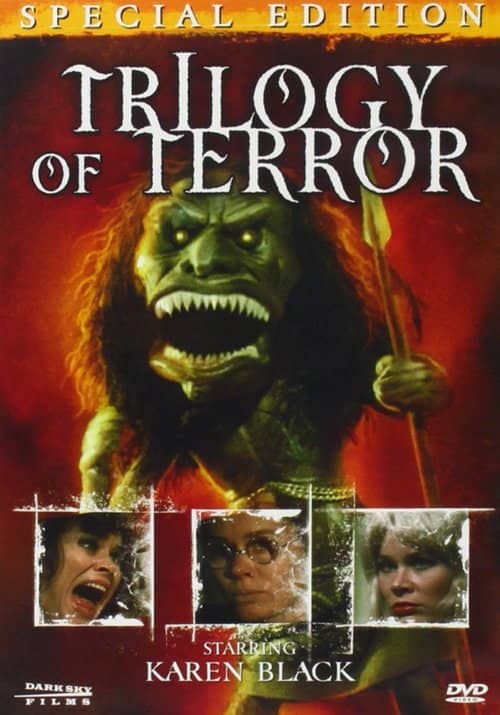
Wednesday, March 5, 1975 dawned cool and cloudy in Los Angeles, as Sergeant Friday used to say. Among the usual topics of conversation that morning during snack break at my high school, one question predominated: Did you see that show last night?! The show in question was the previous evening’s ABC Movie of the Week: Trilogy of Terror. Yeah, that one. The one with the “Zuni fetish doll” that comes to life and wreaks havoc with Karen Black’s apartment, to say nothing of her epidermis.
The ABC Movie of the Week ran for six seasons, from 1969 to 1975, and was one of the first series comprised entirely of movies made specifically for television. Running once (in some seasons, twice) a week, and featuring the usual tv movie aggregation of performers, all fitting into the categories of has-been, never-was, and hoping-to-be (many of whom were shackled to the oars of some other ABC series, naturally), the Movie of the Week presented stories from all genres. Comedy, romance, romantic comedy, western, crime, social issue (unemployment, drug use, the problems of the young and of the aged, and alcoholism were… well, popular is the word, I guess, and 1972’s That Certain Summer is a genuine landmark, being the first American film of any sort to deal with homosexuality in a non-biased manner), disease-of-the-week (remember Brian’s Song?), and what used to be called the war between the sexes all made regular appearances.
It was a very popular series in its day, and even now, the opening sequence with its accompanying music (“Nikki” by Burt Bacharach) can send a rush of debilitating nostalgia (or maybe pus) straight to the brain of a person of a certain age… me, for instance. I especially loved the butterscotch-voiced announcer, intoning, “The Movie of the Week: presenting the world premier of an original motion picture produced especially for ABC,” with that “world premier” part implying that excited people were lined up all over the country, just waiting to sink their teeth into this Andy Griffith or Barbara Eden flavored turkey.
Some of the Movie of the Week’s favorite genres were horror, science fiction, and Hitchcockian (at least ABC hoped it was Hitchcockian) suspense. After fifty years, these are the shows that tend to be best remembered, either for their genuine quality or for their delightful awfulness. Probably no ABC MOW is looked back on with more fondness than Trilogy of Terror, perhaps because it has one foot planted firmly in each camp.
Dan Curtis
Trilogy of Terror was the brainchild of flamboyant producer and director Dan Curtis, the man who brought you Dark Shadows and a ton of other horror themed television shows. Karen Black may also have had something to do with initiating this particular project, as she stars in all three of Trilogy’s half hour segments; indeed, the movie is virtually a one-woman show. Maybe her balloon payment was due.
Karen was a busy lady in those days; only a few months before, she had been a plucky stewardess piloting a crippled 747 while panicked passengers clamored for drink refills and Charlton Heston barked orders at her over an only intermittently operating radio. (Far from being an outlandish fantasy, Airport 75 is actually a sober, factual account of pre-TSA air travel in the 70’s — take it from me.)
Karen Black as Julie
Trilogy of Terror’s first two segments (both scripted by William F. Nolan of Logan’s Run fame, from short stories by Richard Matheson) are fairly tepid affairs, especially compared with what comes later. In “Julie” Black plays a seemingly timid college professor who is assaulted and then blackmailed by a student. The twist is that Julie is actually in control all the time. Through some sort of ill-defined mind control, she reels in a victim, plays with him until she gets bored, and then disposes of him (in this case, by poison) before choosing a new treat from the candy box. Well, that’s one way of cutting down on end of semester grading.
“Millicent and Therese” tells of two sisters, one a prim and reserved young lady with glasses and mousy brown hair and the other a loud, sexually aggressive blonde who favors miniskirts, low cut tops, and too much lipstick. They both hate each other (loving siblings rarely keep matching voodoo dolls), both look a hell of a lot like Karen Black if you don’t examine them too closely (or even if you’re half-blind), and in the story’s Shocking Conclusion are revealed to be… are you ready… you’re really not going to believe this… the same person!! (The family physician declares that the unfortunate Therese Millicent Larimore is “the most advanced case of dual personality I have ever seen.” Clearly, the man needs to watch more TV movies.)
Karen Black as Millicent and Therese
If Trilogy of Terror had to rely on its first two segments it would have been instantly forgotten; the reason it fired up kids from the seventh through the eleventh grade nationwide (seniors had other things on their minds) and the reason it lives in legend to this day is because of its third and final segment, “Amelia.” Again based on a Richard Matheson short story, Matheson did the script himself this time. It’s as good as television Tuesday got in 1975. (The Six Million Dollar Man — which started as a movie of the week, by the way — was on Friday nights.)
“Amelia” begins slowly, with the titular character walking into her apartment carrying a box, out of which she takes a Zuni fetish doll, a gift for her anthropologist boyfriend. The foot and a half high wooden figure depicts a warrior, complete with loincloth, pointy spear, and a mouth full of exceedingly nasty looking teeth. He also comes with a name (“He Who Kills”) and a pre-loaded plot device: a golden chain around his waist that keeps him from coming to life, at least according to the people in the curio shop on Third Avenue. Now, I’m about as versed in Zuni ethnography as I am in nuclear fusion, but I still think it’s safe to say that this little guy bears the same relation to the actual Zuni people as the Boston Celtics’ mascot, Lucky the Leprechaun, does to the people who fled the Great Potato Famine.
Lucky
Television, however, as we all know, is its own separate universe with its own peculiar laws. (Hence, Karen Black getting her own showcase TV movie.)
After examining her new acquisition and noticing how unlovably ugly he looks and how very sharp his spear is (master of foreshadowing, that Richard Matheson), Amelia calls up her mother and tells her that she has decided not to come over to spend the evening, as is their custom on Friday nights. The conversation is strained, to say the least; Amelia obviously has a very difficult relationship with her demanding, controlling parent. The call ends badly, with Mom hanging up while her daughter is still in the middle of a sentence. Barely mastering her anger and resentment, Amelia plunks the doll down on the coffee table and walks out of the room to take a bath. She plunks a little too hard, though, and unnoticed by her, the restraining chain breaks and slips off the doll’s waist.
Amelia draws her bath and then puts her dinner in the oven. Walking back through the living room, her glance falls on the coffee table. The doll is gone.
The next few minutes are a game of hide and seek, as Amelia searches the room, wondering what could have happened to the doll. Feeling around under the couch, she comes up with the spear, but nothing else — except a cut finger, the first of many flesh wounds. While looking under the sofa for the weapon’s owner, Amelia hears an odd noise coming from somewhere in the apartment, a soft scuttling that sounds almost like tiny feet, running. She cautiously walks into the kitchen, to see if it might be coming from there.
She opens drawers, looks in cupboards… nothing. Then, turning, she unmistakably sees a small shadow, the shadow of something running out of the room. Incredulous, she follows into the living room. (In hindsight, she should have fled the building as soon as she heard the bassoon on the soundtrack.)
A table lamp suddenly goes out, and Amelia goes over to investigate. The next moment she’s screaming in pain and surprise, as the wayward Zuni warrior is hacking at her ankles with a steak knife he kyped from the kitchen… and Trilogy of Terror, after spending almost an hour in park, suddenly lurches into very high gear.
The next ten minutes are a frenzied, bloodspattered fight to the finish as Amelia desperately tries to escape, restrain, or destroy her relentless adversary. (There was no CGI in 1975, of course, and the doll is animated simply by having someone off camera manipulate his mouth and limbs. By keeping the camera in close and using a lot of POV shots and quick cuts, the creature’s actions are made perfectly believable.)
Running for her life, Amelia falls to the floor and the doll is instantly on her, slashing and stabbing. (All during his attacks, he spouts a constant stream of enraged gibberish that sounds like a loop of Arnold Schwarzenegger’s yelps played backwards at twice the recorded speed.) She flings him off and staggers into the bedroom, closing the door behind her.
Not to be thwarted so easily, the resourceful little devil finds some way to climb up high enough to reach the doorknob, and faster than you can say “starring Karen Black” (three times) he’s in the room, cutting short Amelia’s call to the police, who really don’t like to deal with domestic disputes anyway. The call isn’t the only thing he wants to cut short, but before he can get to her, Amelia is running to the bathroom, which has a door that actually locks.
Safe at last! But no — calling on the ancient wisdom of his tribe, the doll somehow manages to pick the lock and bolts into the room, ready to do his worst. Thinking fast, Amelia intercepts him, wraps him up in a towel, and thrusts him under the water in the bathtub — maybe she can drown the damned thing. Good try, but wooden Zuni fetish dolls that have been supernaturally animated by the spirit of a vengeful warrior apparently aren’t subject to drowning. Who knew?
Richard Matheson
Giving up on the aquatic approach, Amelia runs into a closet, with the doll in hot pursuit. While trying to hold the door closed and also dodge the blade of the knife that the creature keeps jabbing under the door, she gets an idea. Knowing that as soon as he gets in, the doll will rush straight at her, Amelia readies a suitcase that she found on the floor. Opening the door, she blocks the onrushing doll with the open suitcase. Her attacker runs right into it and Amelia slams it shut and locks it. The monster is trapped!
It’s only a momentary reprieve, though, as the doll immediately starts cutting his way out of the suitcase. Cheap luggage really isn’t the bargain it seems to be; Amelia should have spent a little extra and gotten the Samsonite.
Soon the hole in the suitcase is big enough for the doll to crawl out of and he’s at Amelia again. They careen through the apartment, overturning tables and smashing lamps and eventually wind up back in the kitchen, with Amelia rolling about on the floor, trying to dislodge the doll, who has sunk his jagged teeth deep into her neck. (It’s amazing how unapologetically violent and bloody “Amelia” is. It’s a mini slasher movie before there even was such a thing.)
The moment of decision has arrived; unable to think of anything else to do, Amelia wrenches the demonic doll off her lacerated neck, and, opening the oven door (remember the dinner that she was cooking?) flings the thing inside. She closes the door and leans against it, holding it shut.
By chance, Amelia has finally arrived at the right weapon to use against her adversary. His hair instantly bursts into flame and the rest of him quickly follows; the wooden doll rapidly burns to a cinder. The pork chops are ruined, but Amelia has won!
Sort of. Amelia opens the oven door to make sure that the evil doll has been destroyed, and indeed there isn’t anything left… of the body. But the enraged spirit of the warrior that animated it cannot be consumed by mere heat… and that spirit needs somewhere to go, a new host for its boundless fury. As Amelia pulls back the oven door, there is a sound like a rushing wind and she falls back with a cry.
In the movie’s last scene Amelia, covered with raw wounds and smeared with blood, calls her mother on the phone. In a frighteningly calm voice, she tells Mom that she has decided that they should spend the evening together after all. But since it’s so late, “Why don’t you come by my place? We can go from here…. Good. I’ll be waiting for you.” Amelia then squats in the middle of the room. A butcher knife is in her hand, and she starts to rhythmically drive it into the floor, over and over and over.
And then she smiles… the smile of the warrior, of He — or now, She — Who Kills.
Damn! Hawaii Five-O never had a chance. (Neither did Amelia’s mother.)
There are many more MOWs that are almost as much fun as Trilogy of Terror, and many of them are available on video, and many that aren’t can be watched on – say it with me, now – Youtube. Among the best are 1972’s The Night Stalker (another Dan Curtis-Richard Matheson collaboration), featuring Darren McGavin in a terrific, funny performance as Karl Kolchack, an obstreperous reporter investigating a vampire on the loose in Las Vegas (it spawned a short-lived Kolchack: The Night Stalker series, which deserves a post all to itself), and 1971’s Steven Spielberg directed Duel, with Dennis Weaver as a hapless motorist trying to escape a homicidal big rig driver. Duel is truly frightening, and is still one of the best things Spielberg has ever done.
In the category of the wonderful awful, my personal favorites include 1974’s The Stranger Within, in which Barbara Eden copes with all the problems that beset the modern woman, chief among them how to tell her husband that she’s been impregnated by an alien. In 1972’s Haunts of the Very Rich, a planeload of jerks played by grade-Z television stars arrives at a secluded tropic resort. Just like the passengers on any Carnival Cruise, they quickly discover that they’re dead and in Hell. (During the passionate Lloyd Bridges-Cloris Leachman love scene, viewers all over the country turned to each other and said, “They’re in Hell? We’re in Hell!”) And 1973’s Satan’s School for Girls boasts Kate Jackson (before she was an angel, she was a devil!), ritual sacrifice, and the worst lighting ever seen on any television show.
And that’s without even mentioning Killdozer. I… I really don’t think I have the strength to talk about Killdozer right now, if you don’t mind. I haven’t quite recovered from the last time I watched it. Maybe some other time.
Gotta go now; it’s almost time for The Rockford Files. Hey, the Movie of the Week tonight is called Moon of the Wolf. I think it’s about a werewolf — sounds scary! Be sure to watch it and we’ll talk about it in gym class tomorrow. Later!
Thomas Parker is a native Southern Californian and a lifelong science fiction, fantasy, and mystery fan. When not corrupting the next generation as a fourth grade teacher, he collects Roger Corman movies, Silver Age comic books, Ace doubles, and despairing looks from his wife. His last article for us was Don’t Mess with Mary: P.L Travers’ Mary Poppins.


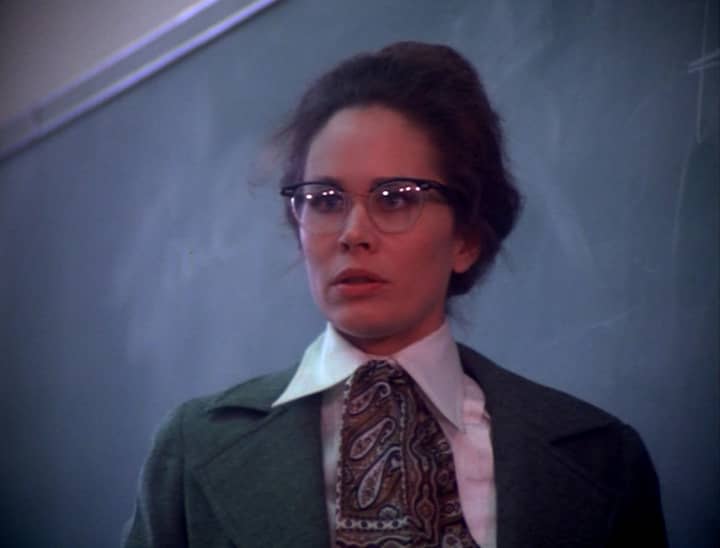


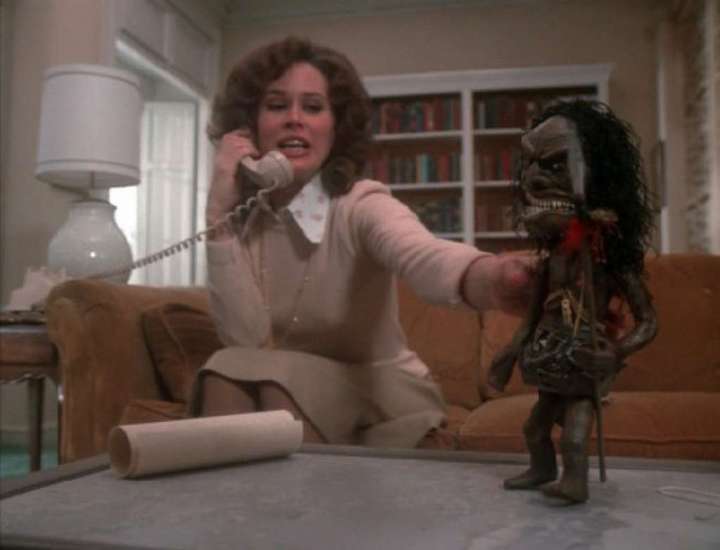
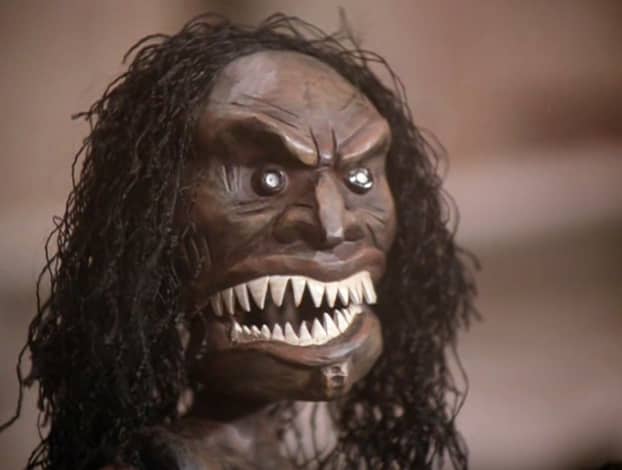
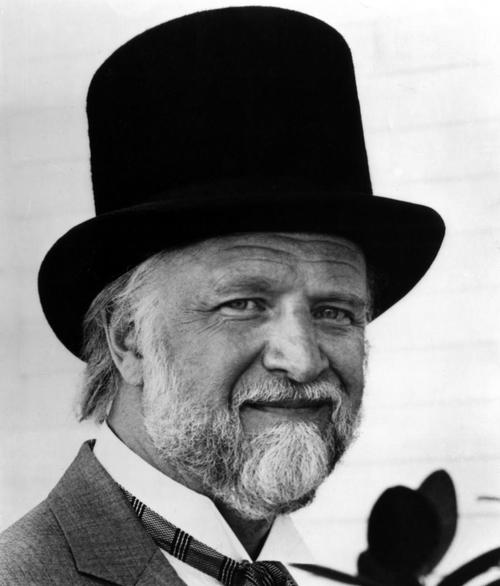
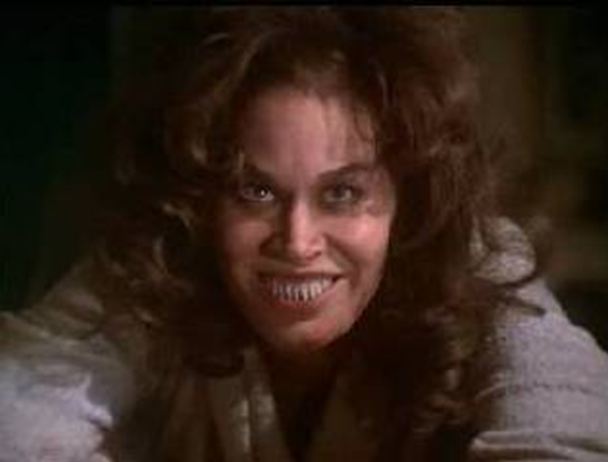
Trilogy of Terror is a movie everyone I know saw and remembers fondly – deliberately, I think, forgetting the first two segments. I personally like Killdozer’s goofy fun, and a friend of mine searched out Haunts of the Very Rich for years back in pre-internet times. Also, my wife is completely unable to rewatch Don’t Be Afraid of the Dark. She was too young to see it when it premiered, instead being surprised by it on the 4:30 Movie one afternoon, when she was still probably too young as it’s haunted her ever since.
Fletcher, I like Killdozer too…that’s the problem. I just like it too damn much!
Hah!
The Night Stalker and The Night Strangler are slated for Blu-ray release later this year.
Hmm…
I remember “Richard Matheson’s story is a personal growth one and worthy of Kafka’s Metamorphosis – but to a young kid it only means one thing; A lady chased around her apartment by a Zuni Fetish doll with a Steak Knife!”
– From Patrick Farley’s “Terrors of the Night”…
The name of the Matheson story “Amelia” is based on is “Prey.” I’ve never read it and I never will – I want my adolescent image of Karen Black’s wild half hour to remain unsullied.